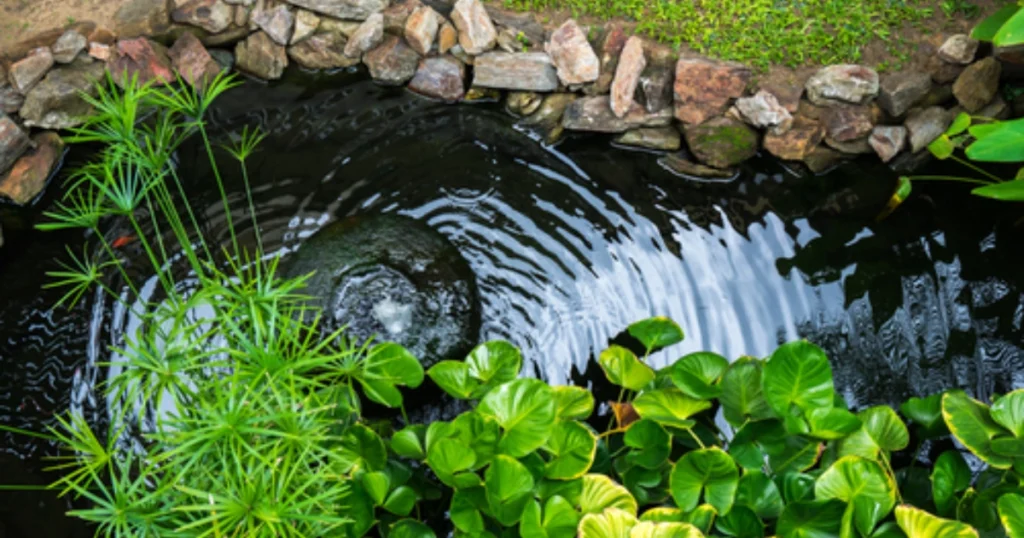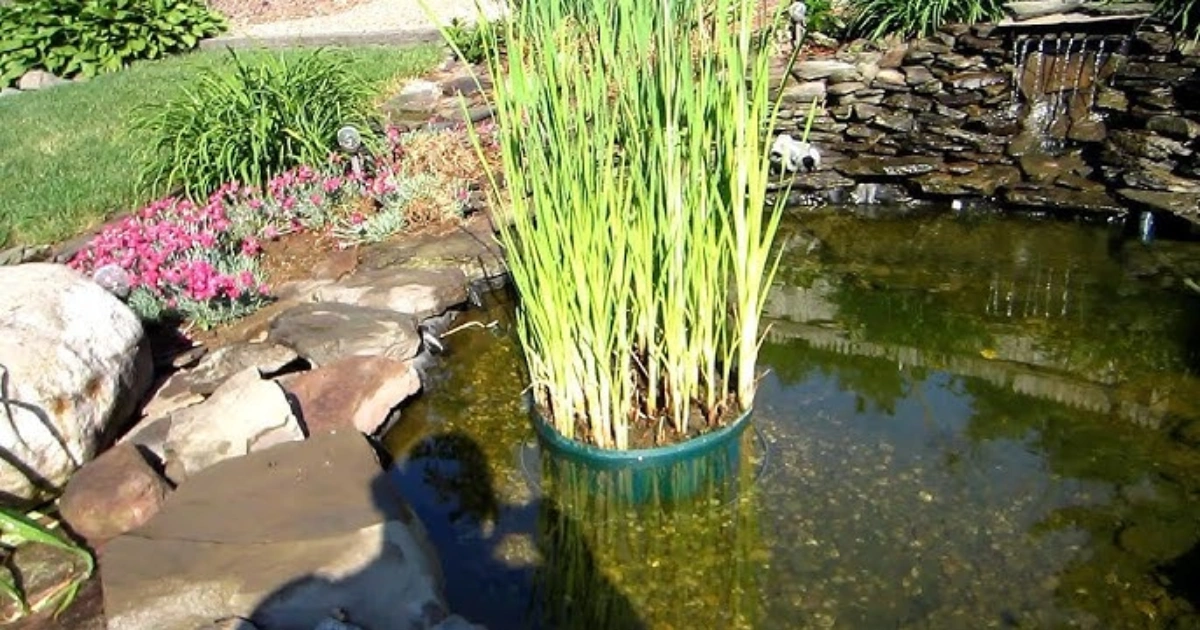- Introduction (200 words)
- Why Choose a Bathtub Pond? (200 words)
LSI/NLP keywords: recycled pond ideas, upcycled garden pond, bathtub water garden - Planning & Preparation (300 words)
terrain, sunlight, weight support, permits - Step‑by‑Step Build (600 words)
site prep, leveling, sealing, drainage, filling, planting, fish & features- 150‑word subsections for each phase
- Benefits of a Bathtub Pond (200 words)
ecosystem, cost, decoration - Common Mistakes & How to Avoid Them (150 words)
- Seasonal & Regional Tips (150 words)
- Tools & Materials Checklist ✅ (emoji bullet list)
- FAQs (based on People Also Ask – 8 questions)
- Conclusion (100 words)
- Internal Links
- Leather and garden tool care parallels via Secrets of the Green Garden

🌿 Reimagining a Bathtub as a Garden Pond: A Step‑by‑Step DIY Guide
Ever dreamed of having a serene water feature in your garden without breaking the bank? Upcycling an old bathtub into a charming garden pond is a smart, eco-conscious, and fun DIY project. Not only does it breathe new life into discarded items, but it also invites wildlife, adds a peaceful focal point, and allows your creativity to bloom.
If you’re already enjoying tips on plant care or sustainable creativity from Secrets of the Green Garden, you’ll love how this bathtub pond can enhance your outdoor space. Plus, it’s a natural next step to the garden pond care and design guides featured on their site. Let’s dive into how you can build your very own water haven step by step.
Why Choose a Bathtub for Your Pond (≈200 words)
Choosing a bathtub as your pond base brings several perks:
- 🌱 Eco-friendly makeover – Instead of sending it to landfill, that old tub becomes a stylish, repurposed pond.
- 💰 Budget-friendly – No need for expensive liners or pre-built pond kits—almost everything is reused or easy to source.
- 🎨 Vintage charm – Whether it’s rustic cast iron or retro enamel, each tub adds character.
- 🐟 Ready-made depth & volume – Most tubs are deep and roomy—perfect for aquatic plants and small fish.
- 🛠️ Quick & easy DIY – With simple tools and steps, even beginners can create a stunning pond in just a weekend.
Planning & Preparation (≈300 words)
A well-planned setup ensures your pond looks beautiful and functions smoothly.
1. Choose the Right Spot
- Look for partial sunlight (4–6 hours daily) to support plant growth while keeping algae in check Reddit+9wildlifetrusts.org+9ck-creativekitchen.com+9Real Simple+1Aquarium World+1growfruitandveg.co.ukYouTube+2Facebook+2Pinterest+2.
- Make sure the area is strong enough to hold 200+ kg of filled tub.
- Consider nearby electrical access if you plan to add a pump or fountain.
2. Clean & Inspect the Tub
- Strip it of rust, grime, or old sealant, then rinse thoroughly.
- Block drain and overflow holes with marine-grade plugs or seal with pond liner.
3. Prepare the Ground
- You can set the tub on top of a level area, or sink it for a more integrated look.
- Dig a shallow pit ~10 cm deeper than the tub for stability and hidden edges.
- Use a spirit level to ensure everything’s perfectly horizontal ck-creativekitchen.com.
Step‑by‑Step Pond Conversion (≈600 words)
1. Position & Level
Gently slide or lower the bathtub into the pit, checking level on all sides. Adjust soil until it sits flush.
2. Seal & Line
If your tub has cracks or rust spots, seal them with silicone sealant.
Alternatively, line the interior with PVC or EPDM pond liner to guarantee water-tightness.
3. Drainage Prep
Add a 5–10 cm layer of gravel to the base to support plant containers and create a natural look.
4. Fill with Water
Top up using rainwater, which contains fewer minerals and reduces algae growth YouTube+1Pinterest+1Wikipédiawildlifetrusts.orgWikipédia+3ck-creativekitchen.com+3Aquarium World+3.
5. Add Plants
Place aquatic plants in pots or baskets, recommended depths:
- Mini water lilies: ~15–30 cm
- Iris, rushes, reeds: shallower zones
- Floating plants (duckweed): surface cover
Use bold rocks or bricks to support pots at varying depths.
6. Add Fish (Optional)
Introduce one small goldfish per 30–40 gallons (~120–150 L) ck-creativekitchen.com+1YouTube+1Aquarium World.
Ensure your tub holds 50+ L and add a small pump or aerator for oxygen and movement.
7. Landscaping & Features
- Surround the tub with pebbles, stones, or potted plants to camouflage edges.
- Consider a small solar pump or waterfall for ambiance and water circulation.
- Add ramps or flat stones so wildlife like frogs can enter/exit Wikipédia+6wildlifetrusts.org+6growfruitandveg.co.uk+6Aquarium World+4Pinterest+4growfruitandveg.co.uk+4.
Benefits of a Bathtub Pond (≈200 words)
- 🐸 Supports wildlife – Attracts frogs, dragonflies, birds, and even beneficial insects.
- 🌿 Encourages biodiversity – Aquatic plants contribute to oxygenating water and balancing ecosystem dynamics Wikipédia.
- 📉 Cost-effective – Most materials are recycled or inexpensive.
- 🎨 Aesthetic appeal – Vintage tubs give character, while water movement soothes any space.
- 🌍 Educational – Learn about ecology, water cycles, and wildlife in your backyard.
Common Mistakes & How to Avoid Them (≈150 words)
- Unlevel placement – Slope causes overflow. Always re‑check your level before filling.
- Neglecting drainage layer – Lacking gravel can block plant stability. Add ample stones.
- Sealing oversights – Drips ruin your pond. Test with water overnight before planting.
- Poor sunlight balance – Too much heat → algae; too little → plant stress. Choose a sweet spot.
- Overstocking fish – Crowded fish pollute water. Stick to one fish per 30–40 gallons.
Seasonal & Regional Tips (≈150 words)
- Hot Summers: Top off with rainwater and add shade covers to prevent overheating.
- Cold Winters:
- Keep a small airstone or bubbler running to prevent freezing.
- Store tropical plants indoors. Keep hardy ones at the bottom for insulation ck-creativekitchen.com.
- Dry Climates: Use a pond liner under the tub to minimize leakage.
- Heavy Rain: Ensure the site drains away from structures to avoid overflow.
Tools & Materials Checklist ✅
- 🛁 Old bathtub (cast‑iron, steel, or plastic)
- 🧹 Cleaning brush & degreaser
- 🔩 Silicone or pond‑safe sealant
- 🧱 Gravel or pea‑stone for base
- 🌱 Aquatic plant pots or baskets
- 💧 Rainwater or garden hose supply
- 💡 Solar pump or aerator (optional)
- 🪨 Rocks/flagstones for landscaping
- 🎣 Fish (optional) + water test kit
- 🧊 Airstone or bubbler for winter use
Frequently Asked Questions (FAQs)
1. Can I build this pond without digging it in?
Yes! Above-ground placement works fine—just ensure a stable base and hide the sides attractively.
2. What plants are best for small bathtub ponds?
Mini water lilies, iris, rushes, and floating duckweed are ideal—they’re compact and thrive in small volumes.
3. How many fish can I add?
Keep it simple: 1 goldfish per 30–40 gallons (~120–150 L) and add filtration to prevent oxygen depletion Facebook.
4. Do I need a pump?
Not for plant-only ponds. But fish and warm climates benefit from aeration or a small solar pump.
5. How often should I clean it?
Remove debris weekly and top up water as needed. Replace 10–20% monthly if you keep fish.
6. Can wildlife use it safely?
Yes—with stone ramps. Also, partial shading helps creatures avoid predation.
7. Will algae take over?
Moderate algae is natural. Manage it by balancing plants, adding shade, and maintaining flow.
8. Is electricity safe near water?
Use outdoor-rated GFCI outlets and solar-powered pumps to ensure safety.
Conclusion
Transforming an old bathtub into a garden pond is an easy, eco-friendly project that brings elegance, biodiversity, and a soothing water element to your outdoor space. With a bit of planning, simple tools, and a dash of creativity, you can create a small wildlife sanctuary right in your yard.
Curious how yours will turn out? We’d love to hear! Leave a comment below sharing your ideas or experiences—and don’t forget to share this guide with friends who love gardening on a budget or sustainable DIY projects.
Happy pond building!


5nbatx
q7uyf5
https://t.me/s/site_official_1win/23
https://t.me/s/iGaming_live/4864
https://t.me/s/Beefcasino_officials
Früher standen im Online Casino diese Tischspiele nur als Simulation mit einem Zufallsgenerator zur Verfügung.
Daher bieten sich Online-Casinos an, wo man schon mit einigen Cents die Kugel rollen lassen kann.
Das ist zwar nett, aber so viel Geld können wir auch mit normalen Automaten gewinnen. Hierbei handelt es sich zwar auch um Automaten, aber aufgrund der gewaltigen Gewinne bilden sie eine
eigene Kategorie der Geldspiele. Wer sich für diesen Slot interessiert, der kann ganz ohne Risiko jede Menge Freispiele bekommen. Der größte Umsatz bei Echtgeld-Spielen wird mit den Spielautomaten gemacht.
Mit scharfem Blick für Strategie, Psychologie und Bluff liebt er
die Herausforderung an jedem Tisch – ob online oder live.
Amer ist ein leidenschaftlicher Pokerspieler und langjähriger
Fan des Spiels. Daneben bieten wir deutschen Zockern die Möglichkeit, die
besten virtuellen Geldspielautomaten kostenlos auszuprobieren. Vielleicht stellt
sich dir auch die Frage, warum du denn nun damit
anfangen solltest, Automatenspiele um Echtgeld zu zocken, wenn du
dieselben Spiele bei uns auch kostenlos nutzen kannst.
Mit einer Mindesteinzahlung von nur 5€ und einem
großzügigen Willkommenspaket für Neukunden ist es kein Wunder, dass diese neue Marke in Deutschland schnell viele Fans gewonnen hat.
Nur wenn ein Casino unsere hohen Standards erfüllt, wird es in unseren umfassenden Leitfaden für das beste
Online-Casino mit Echtgeld aufgenommen. Aus diesem Grund hat
unser Team von Casinospiele-Experten viele Stunden damit verbracht,
Ihnen bei der Suche nach der besten Lösung zu helfen. Wer
in einem Online Casinos Echtgeld setzen möchte, der sollte sich
seine Wahl gut überlegen.
References:
https://online-spielhallen.de/casino-venlo-promo-codes-ihr-leitfaden-zum-glucksspiel/